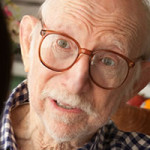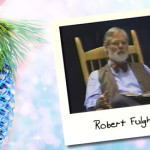
I did not read the 2011 Salon article “My Stillborn’s Life After Death” until recently. Initially I wondered if the author, Elizabeth Heineman, had written a macabre spoof on the funeral industry.
She hadn’t.
It is a true story about a “straight-talking-why-not” funeral director who went off-script and made a difference in this young couple’s experience of burying their infant son, Thor. It is a sweet and redeeming story.
To the chaplains reading this blog post: you not only work with couples who enter the hospital with a dream and leave with a nightmare, you also work within a network of support providers who might be better at what they do, if they read this.
So pass this excerpt on. OK?
Thanks!
My Stillborn Child’s Life after Death
The official pronouncement of Thor’s death came an hour after his delivery, but I’d known he was dead since he’d come out without a pulse. If they’d been able to resuscitate him, someone would have told me.
The hospital staff said we could have him for half an hour.
Once upon a time, stillborn babies were whisked away and the mothers didn’t see them. But now hospitals let parents hold their stillborn babies, so they can say goodbye.
No one seems to understand that first they have to say hello.
This is the story of how I said hello to my stillborn son. Not for half an hour like the hospital staff wanted. Not for the six hours I negotiated when they couldn’t give me a reason for the half-hour limit. This is the story of how I said hello to my stillborn son in the days that followed, in visits to the funeral parlor, in his visits to our home, which should have been his.
(…)
And so, the morning after I delivered Thor, Glenn and I ate a wordless breakfast and drove to the funeral home. This is what you do the day after you have a baby. You go to the funeral home.
Mike, the home’s director, sat us down at a walnut-stained table and let out a sigh. “I got the report from the hospital,” he said. He was a big man, perhaps a few years older than I, with short dark hair parted to the side and rimless glasses. His voice had a soft twang. “I am so sorry. Why don’t you tell me what happened?”
I shrugged. “The baby died,” I said. What did he think had happened?
Mike nodded. He wanted more.
I told him the story (…) I shrugged again. I wasn’t interested in Mike’s canned words of sympathy.
He shook his head, clicked his tongue against the roof of his mouth, and said: “That’s the shits.”
I blinked and looked slowly up at him. Yes, I thought. That’s the shits.
Over the next days, Mike’s complete lack of orthodoxy enveloped me like a blanket. He never showed a hint of the practiced seriousness that I’d dreaded, suspecting that’s probably what people learn at funeral director school. Instead he treated Thor as a human being. A baby human being, and babies aren’t at all serious. Babies are cute; they make you laugh.
Neither Glenn nor I had ever organized a funeral before. We had never given the slightest thought to what we might want our own funerals to be like. We talked about caskets. Programs. Music. Mainly, we talked about timing. Should we bury Thor that weekend? My sister and Glenn’s sister had already booked flights for Thanksgiving a week later. Maybe we should postpone till then so it would be easier for our families to fly in. But lots of our friends would be out of town then. We could bury him now but have the service later, Mike suggested. No, I didn’t like that.
What is the perfect time to bury Thor? I wondered. The perfect time is no time. We can’t bury him. We just got him.
We decided to wait till our families could come.
And then, when I thought we were done, Mike said it: “Well, you just come and visit him any time you want.”
My hand, grasping a soggy tissue, froze in midair. I looked up at him. “We can visit him?”
“Of course you can visit! Oooh, what a little sweetie! Now, you’ll have to wait till we get him embalmed – that’s required if we don’t bury or cremate within three days. But tomorrow, that would be just fine.”
I gaped at him. I had thought I would never see Thor again when we’d left the hospital. I was almost as grateful as if Mike had told us he could bring Thor back to life.
“Shoot, take him home if you want! Take him overnight, spend some time with him. Maybe you have some friends who’d like to visit with him? It’ll be fine, just keep him in a room that’s cool.”
Our bedroom, I thought, my head spinning. We always turn down the heat there during the day, to save energy. And at night the whole house is cool anyway.
But of course that wasn’t the point. Our bedroom was where Thor was supposed to have slept with us, where I was supposed to have nursed him.
Where we were supposed to have said hello.
This was when I understood: Thor was our baby. He did not belong to the hospital. He did not belong to the funeral home. He was ours.
So began my life with Thor. Thor pulled me to him like a magnet. I craved him. I never thought he was real, if by real you mean alive or in some way sentient after death. I just wanted to be with him. Not with him in spirit. With him in body.
I’d carried his body inside me for nine months; I’d felt it kicking for the last five or six of them. That body had forced its way out of me early in the morning of Nov. 12, 2008, and along the way it had turned from a living body to a dead body, but it was still Thor. Why should the body that was Thor transmogrify from a beloved member of the family, from a familiar part of my own body, into a repellent object just because it had died? This was my child.
Intimacy with your dead loved ones used to be normal. (…) But nowadays you’re not supposed to caress and adore dead bodies. Now you’re supposed to keep corpses in their proper place, which may be the morgue, may be the funeral home, but most important is somewhere else, away from the living.
But this isn’t the law. It’s just that no one bothers to tell grieving families their options. Except for Mike.
Over the next days, as we sat in our dark living room, suffocating on the exhalations of flowers sent by various well-wishers… We were supposed to be caring for a newborn. We were supposed to be exhausted with feedings, diaperings, soothings of upset tummies. But now, aside from planning the memorial service, what were we supposed to do with our time? Grade papers? Pick up groceries? The banality of the ways we usually passed our days felt sickening.
(…)
“Are you sure it’s OK to visit Thor?” I asked Glenn one day as I prepared to go to the funeral parlor, my voice shaking as I pulled on my jacket. I was desperate to see Thor, but I was also anxious. Perhaps a woman who carried and cooed to her dead baby would disgust her lover.
Glenn had just finished lunch and was washing the dishes. He put the pot he held into the drying rack, paused, and turned slowly toward me. He hadn’t shaved in days. He looked worn out.
“I don’t know what I think about spending time with Thor,” he said, “which is why I don’t feel I have to see him every day, like you do.” Dread filled my belly. I was right, he was disgusted. “But I do know that the only time you’re at peace is when you’re with him.”
No, he understood. Or he understood that he didn’t need to understand.
Perhaps I didn’t understand either, because understanding is a step beyond knowing. But knowing was enough, and I knew this: I wanted to be with Thor.
And so, a couple of days later, I took Thor from Mike’s arms into mine, carried him outside — his face exposed to the fresh air, the bright light! — and stepped into the car, Glenn in the driver’s seat, me riding shotgun, Thor in my lap.
We brought Thor home.
I showed Thor his room. (…) I showed Thor Josh’s (his brother’s) room.
(…)
We took Thor to the backyard. Glenn spoke haltingly to him about how glad we were to have him home, how sad we were that he was gone. I chattered about the fallen leaves, the squirrels fattening themselves up for winter, the noisy crows in the trees.
I plucked some sage and put it into Thor’s hand, rubbing it to release the odor. The sage stays green even when the weather gets cold, I explained. We always use it for Thanksgiving, and that’s still a week away. This was good. Thor could see how things grew in the garden, even though most of the vegetables were already gone and he wouldn’t be around to see the new crop go in next spring.
(…)
We showed Thor where he would be buried. We told him why his plot was special: how it was right next to the woods so there would be lots of bunnies and deer. How there weren’t any streetlights so at night you could see the stars. How we would dress up the grave with flowers and put up a birdfeeder to make sure there were lots of bird visitors.
We prepared Thor to go out into his world. Isn’t that what you do with your children, before you say goodbye?
(…)
The author, Elizabeth Heineman, teaches at the University of Iowa. Her memoir of her stillbirth is entitled “Ghostbelly“.
Subscribe to Blog































